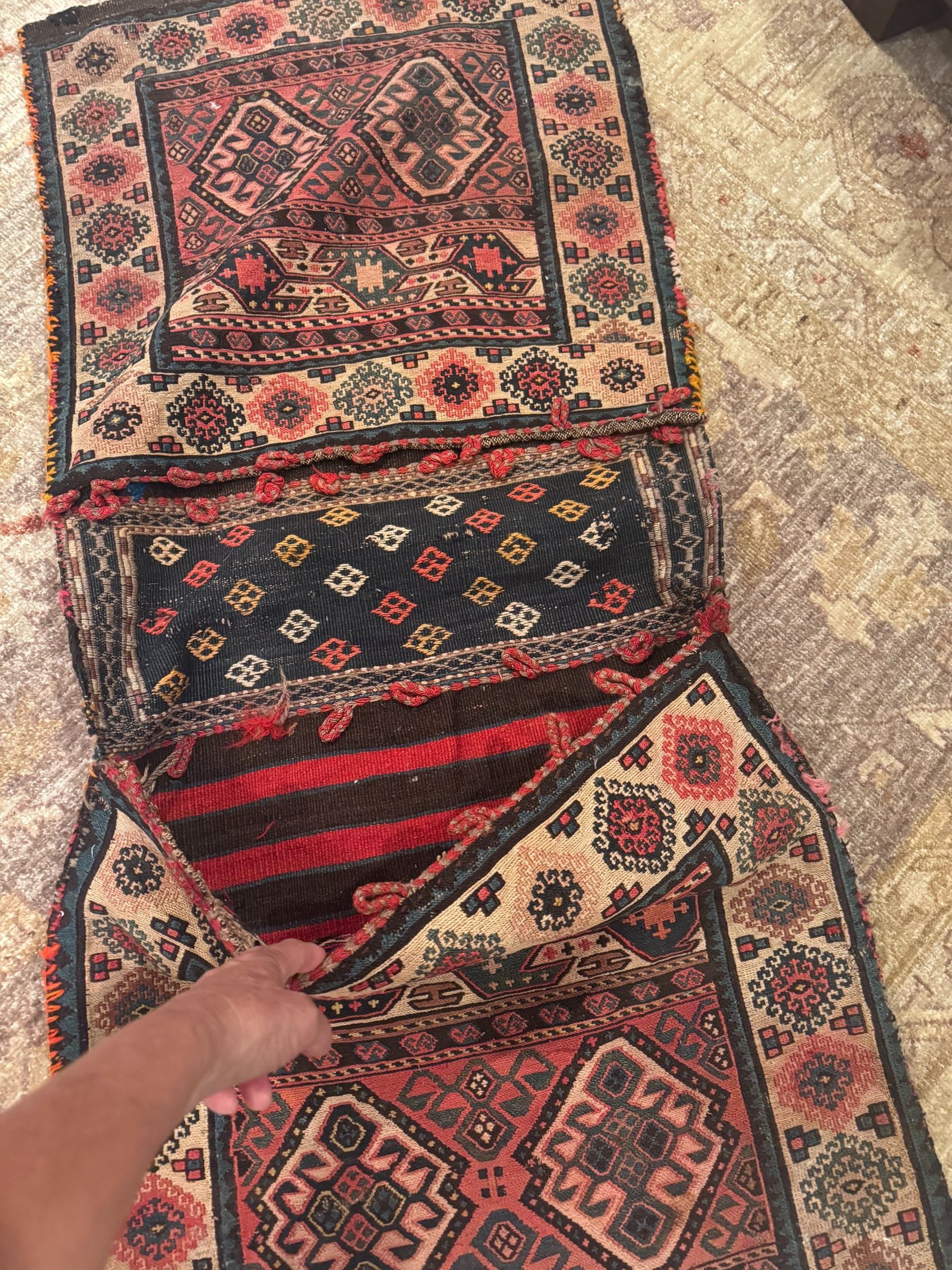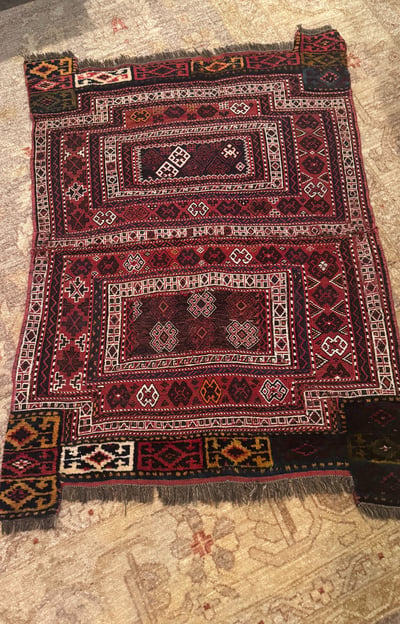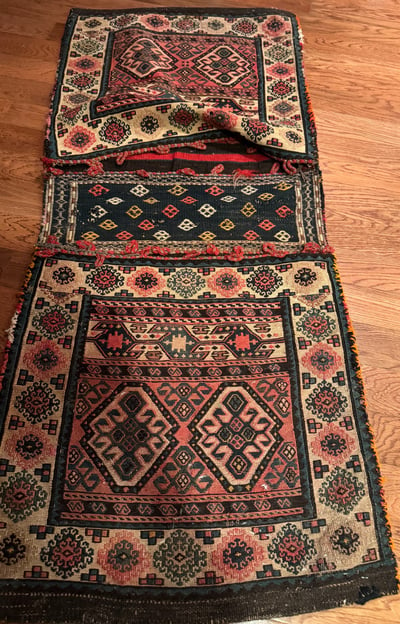
Woven Narratives: The Enduring Art of Antique Turkman Saddle Bags and Rugs
Antique Turkman Saddle Bags and Horse Rugs
TACK
Megan Cardet
5/28/20253 min read






The allure of the antique Persian Turkman saddle bag and rug lies not just in their aesthetic beauty, but in the echoes of a nomadic past, a testament to artistry born from necessity, and the enduring spirit of a people. These are not mere utilitarian objects; they are woven narratives, each knot a syllable, each motif a chapter in the rich tapestry of Turkman culture.
The Saddle Bag: A Nomadic Treasure Chest
Imagine the vast, arid plains of Central Asia, the rhythmic sway of a camel or horse, and atop it, a Turkman tribesman. Essential to his journey, his livelihood, and his very survival, was the saddle bag, or khorjin. Far from being a simple carrying case, the Turkman saddle bag is a masterpiece of portable art.
Typically woven in pairs, connected by a central strap to drape over the animal's back, these bags were crafted by women, often as part of their dowry or for the family's use. The front, or "face," of the bag is where the weaver's artistry truly shines. Here, intricate geometric patterns, often in rich, saturated hues of madder red, indigo blue, and natural ivory, emerge from a field of meticulously knotted pile. These designs are not random; they are deeply symbolic, representing everything from tribal affiliation and prosperity to protection from the evil eye. Common motifs include the gul (a stylized floral or octagonal medallion, often specific to a particular Turkman tribe like the Tekke, Salor, Saryk, or Ersari), stars, animals, and abstract interpretations of natural elements.
The back of the saddle bag, while less ornate than the front, is equally important. Often woven in flatweave techniques like kilim or soumak, it provides structural integrity and showcases different, though still beautiful, patterns. The opening of the bag, usually at the top, is secured with braided cords or loops, further adding to its handcrafted charm.
Owning an antique Turkman saddle bag is to possess a piece of nomadic history. It speaks of journeys across unforgiving landscapes, of goods traded at bustling bazaars, and of the intimate daily lives of people who were masters of their environment. Each abrasion, each faded hue, tells a silent story of its travels and its purpose, adding layers of character and authenticity that modern reproductions simply cannot replicate.
The Turkman Rug: A Grounded Universe
If the saddle bag is a portable narrative, the Turkman rug is a grounded universe, an expansive canvas where the same artistic principles are applied on a grander scale. These rugs, often referred to as "Bukhara" in the Western market due to their historical trade routes, are renowned for their deep, lustrous reds, often achieved through natural dyes derived from madder root. The variation in shade within these reds, known as abrash, is a cherished characteristic, indicating the use of natural dyes and contributing to the rug's organic beauty.
Like the saddle bags, Turkman rugs are characterized by their repeating geometric gul motifs, each tribe boasting its distinctive design. The Tekke gul, for instance, is a highly stylized octagonal medallion with a central cross or star, while the Salor gul is often more elaborate and jewel-like. These primary guls are interspersed with minor guls and a rich array of secondary motifs, all meticulously rendered with a precision that belies the conditions under which they were woven.
The borders of Turkman rugs are equally significant, framing the central field with intricate designs that complement and enhance the main patterns. These borders often contain a series of smaller medallions, geometric forms, or even stylized human and animal figures, each element contributing to the overall harmony and complexity of the design.
Beyond their visual appeal, antique Turkman rugs possess a tactile quality that is deeply satisfying. The hand-knotted pile, often sheared to a specific height, creates a plush surface that is both durable and inviting. The natural lanolin in the wool gives them a soft sheen that subtly shifts with the light, revealing the depth and richness of their colors.
The Enduring Legacy
Today, antique Persian Turkman saddle bags and rugs are highly sought after by collectors and connoisseurs worldwide. Their value lies not only in their age and rarity but in their intrinsic artistic merit and the tangible link they provide to a bygone era. They are more than just decorative objects; they are cultural artifacts, embodying the skill, resilience, and artistic spirit of the Turkman people.
To own such a piece is to invite a piece of history, a whisper of nomadic journeys, and a testament to enduring beauty into your home. They remind us that true art can emerge from the humblest of materials and the most challenging of circumstances, forever weaving stories of the past into the present.
My post content